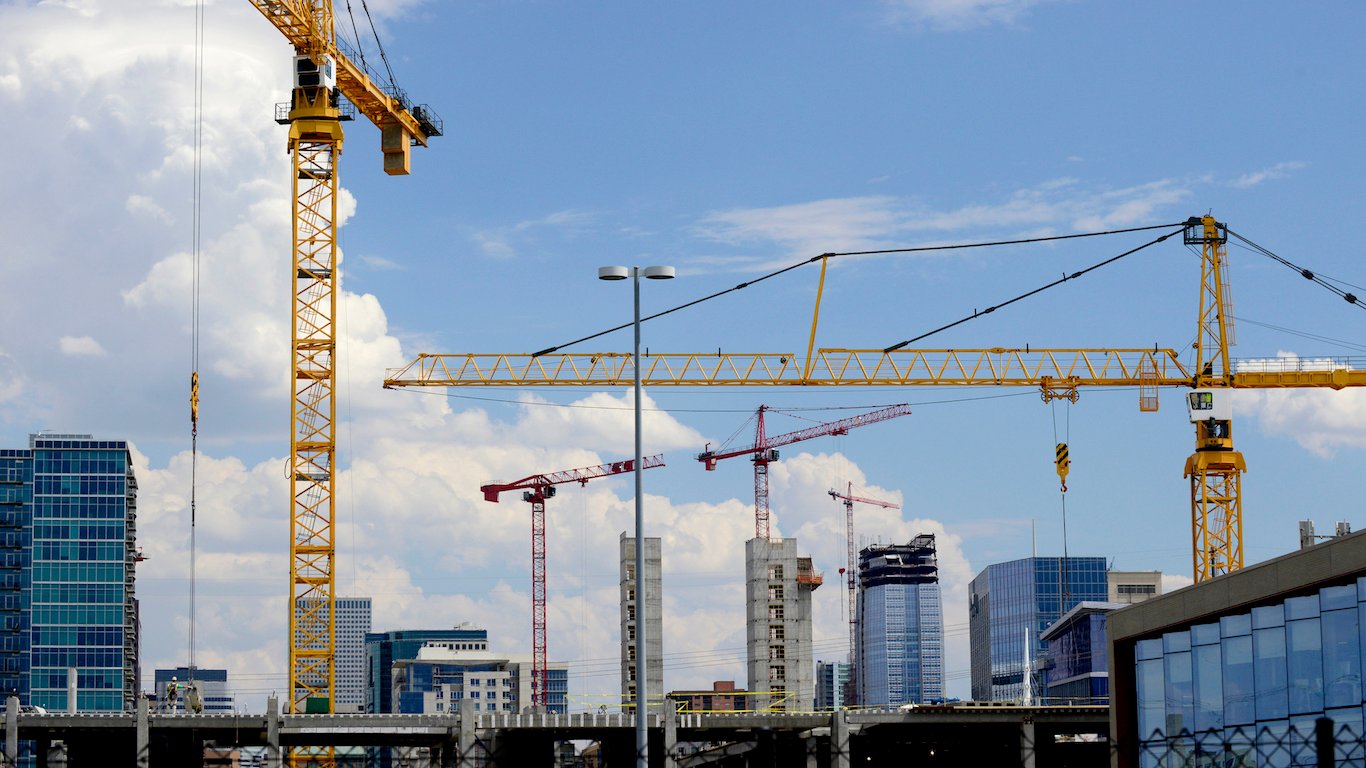

Economists participating in the National Association of Business Economists (NABE) third-quarter survey expect real (inflation-adjusted) gross domestic production (GDP) to average 3.1% in 2018, a 0.3-percentage point increase since the group’s June survey. Nearly half lowered their forecasts by 0.25 points or less, and more than a third made no change to their earlier projection.
For 2019, 78% lowered their real GDP growth forecasts by 0.01 to 0.50 percentage points, while 8% raised their forecasts. Just over half (51%) said that risks to GDP growth are weighted to the downside, while 20% think upside risk is greater. The remainder saw the risks as balanced.
NABE’s survey chair, David Altig, executive vice president and director of research for the Federal Reserve Bank of Atlanta, said:
Trade issues are clearly influencing panelists’ views. Half of survey respondents have moderately increased their inflation forecasts as a result of trade policy changes. Over half of the survey respondents indicate that they had reduced their GDP growth forecasts for 2018 and nearly 80% did so for 2019. Nonetheless, the percentage of panelists expecting a recession in 2019 fell relative to that in the June survey. One-third of respondents expects that we will not see a recession until 2021 or later.
The survey indicated that trade policy presents the greatest downside risk to GDP growth according to 41% of the respondents. Higher interest rates and a decline or heightened volatility in equity markets were the next highest downside risks, with each being named by 18% of respondents. Upside is driven by corporate tax reform (33%) and stronger wage growth (27%).
In the NABE’s June survey, half of the economists said they expected the next recession to show up between the fourth quarter of 2019 and the second quarter of 2020. In the new survey, more than half (56%) don’t expect the next recession until 2020, and a third don’t expect it to happen until 2021 or later.
The median forecast for nonresidential fixed investment for 2018 jumps from an actual rate of 5.3% in 2017 to 7.1%, a sharp increase from the June survey’s median of 5.8%. The median forecast for 2019, however, drops back to 5%.
Inflation, as measured by the GDP price index, is expected to rise from an actual level of 1.9% in 2017 to 2.3% this year and next. The core personal consumption expenditures (PCE) index, which excludes food and energy, is forecast to rise to 2.1% at the end of 2018 and to 2.2% in 2019. The PCE index ended 2017 at 1.4%. More than half (59%) of respondents believe upside risk for inflation is greater than downside risk.
Regarding wages, the NABE survey’s median forecast for growth in hourly wages was revised up from 2.8% in the June survey to 3% in the new survey, rising to 3.2% in 2019.
NABE offers a free summary of the report at the organization’s website. The summary also includes survey questions and responses along with a list of the economists who responded.
Sponsored: Attention Savvy Investors: Speak to 3 Financial Experts – FREE
Ever wanted an extra set of eyes on an investment you’re considering? Now you can speak with up to 3 financial experts in your area for FREE. By simply
clicking here you can begin to match with financial professionals who can help guide you through the financial decisions you’re making. And the best part? The first conversation with them is free.
Click here to match with up to 3 financial pros who would be excited to help you make financial decisions.
Thank you for reading! Have some feedback for us?
Contact the 24/7 Wall St. editorial team.



